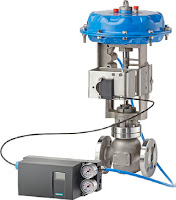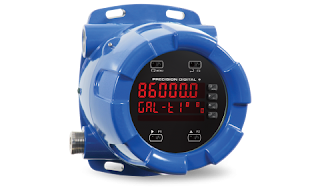Front, back and in between, the PD8-6000 explosion-proof process meter boasts specifications, features and functionality that make it the only hazardous area process meter you will ever need.
The PD8-6000 is approved as a complete product by FM and CSA and also carriers IECEx approvals. Besides being suitable for hazardous areas, the number one feature that makes the PD8-6000 such a useful device is its built-in 24 VDC power supply to drive the transmitter as illustrated by the above diagram. This feature not only saves the cost of an external power supply, but also greatly simplifies wiring. In addition, there is a second 25 mA power supply provided with the 4-20 mA output option
Its superluminous LED digits make it easily readable in smoke, dust, fog, and, with the optional SunBright® display, even direct sunlight. It accepts a process current (4-20 mA) or process voltage (0-5V, 1-5V, etc.) signal and displays it on a dual-line, 6-digit SunBright® sunlight readable display.
The meter includes a 24 VDC power supply to drive the transmitter and can be equipped with up to four internal relays and a 4-20 mA output. The PD8-6000 can be programmed and operated without opening the housing by using the built-in SafeTouch® through-glass buttons or the RS485 serial communication port with free Modbus® protocol.
A fully loaded PD8-6000 meter has the following: four SPDT relays, 4-20 mA output, and two 24 VDC power supplies. The four relays can be used for alarm indication or process control applications such as pump alternation control. The 4-20 mA isolated output, Modbus RTU serial communications, and digital I/O options make the PD8-6000 an excellent addition to any hazardous area application.
For more information, contact Ives Equipment by calling 877-768-1600 or by visiting https://ivesequipment.com.
Educational information on process control, industrial instrumentation, valves, valve automation and control valves. For additional information visit IvesEquipment.com or call 877-768-1600
Reducing Material Waste in Flexible Pet (Polyethylene Terephthalate) Production
Polyester is very popular because it is a light, soft, flexible, low-maintenance material that keeps you warm. Making it this way poses diverse challenges to PET producers.
A chemical plant specializing in producing PET was looking for a solution to reduce the waste resulting from product variance. The factory produces 25,000 tons of polyester annually, which is then provided to other manufacturers to produce a vast range of end products.
 |
| The SITRANS FC430 monitors the glycol flow. |
These source materials are stored in stainless steel bins with a volume of 2649 ft3. Rotary feeders move the mate- rial from these bins to a batching vessel along with glycol to make the polyester paste. The batching vessel is agitated to ensure that the mixture is always consistent. Monitoring tank levels, precisely controlling the dosing, the efficient use of raw materials and ensuring a consistent mix are the key parameters
 |
| SIWAREX WP251 |
Don’t get mixed up during mixing
Each raw material bin is mounted on Siwarex WL280 ring torsion load cells to achieve optimum weighing accuracy. These load cells are connected to two Siwarex WP251 weighing modules, which are specifically designed for batching applications. The advantages of this solution are that the WL280 load cells feature a C3 class rating for accuracy as well as an IP68 rating for protection against dust and direct high-pressure cleaning – ideal for handling powder materials such as PTA. In connection with the Siwarex WP251, a customer-specific application was engineered with a resolution of up to +/- 4 million parts.
 |
| SITRANS TS500 |
How powder and liquid become PET
 |
| Pointek CLS200 |
Less material waste and reduced downtimes
 |
| SIPART PS2 |
 |
| Simplified diagram showing the customer’s process. |
Ives Equipment
877-768-1600
https://ivesequipment.com
Subscribe to:
Posts (Atom)


